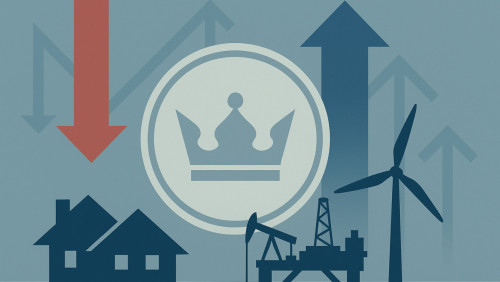English
Norwegian Economy and Krone after Easter 2025

Norwegian Krone 2025 after Easter MN
After the Easter holiday, many Poles are wondering what will happen with the Norwegian krone, prices in stores, and the job market situation. Below, without economic jargon, you'll find the key points to help understand what's happening in Norway and what to expect until the end of 2025 and in 2026.
In Brief
- The Norwegian krone remains weak – about 2.7 NOK for 1 PLN and 11.7 NOK for 1 euro.
- The main reasons for the weak NOK are global uncertainty, the oil fund's investments abroad, and Norway's reduced interest rate advantage.
- Inflation has dropped to 2–3%, but prices remain high, especially for food, electricity, and fuel.
- Wage increases for 2025 average 4.4% – most workers gain little in real terms.
- The best-performing sectors are: oil and gas, IT, green energy, public contracts.
- Under pressure are: housing construction, road transport, retail trade.
- Unemployment is around 3.8% – there is still a shortage of many specialists.
- Interest rates are high (4.5%), with reductions possible only towards the end of 2025.
- The government is using the oil fund to mitigate the crisis effects and avoid raising taxes.
- Expected gradual economic recovery and possible loan rate reductions in 2026.
Krone Exchange Rate – Why Is It Weak?
- Exchange Rate: about 2.7 NOK for 1 PLN and nearly 11.7 NOK for 1 euro.
- Main reasons for the weakening:
- Global uncertainty (wars, conflicts) – investors prefer dollars and euros.
- The Norwegian "oil fund" places profits abroad, so kroner do not circulate in the country.
- Interest rates in other countries have risen, and Norway's advantage has diminished.
- What does this mean? Salaries in NOK yield fewer zlotys than a few years ago, but Norwegian exporters enjoy greater profits.
Inflation and Cost of Living
- Rate of price increase has fallen from over 7% in 2022 to about 2–3% today, but the price level remains high.
- The most noticeable price hikes in recent years: food, electricity, fuel, and loan installments.
- Wage increases negotiated for 2025 average 4.4%, so most workers are slightly "above the line."
Which Sectors Are Doing Well and Which Are Struggling?
- On the rise:
- Oil and gas – record investments, especially around Stavanger.
- IT and automation – strong demand for programmers and engineers.
- Green energy – growing wind and hydrogen projects.
- Public contracts – roads, schools, or hospitals are steady assignments for companies.
- Under pressure:
- Housing construction – high interest rates halt new housing developments.
- Road transport – expensive fuel and lower demand cut margins.
- Retail trade – customers limit "non-essential purchases."
Job Market – Still Favorable for Workers
- Unemployment around 3.8% – one of the lowest in Europe.
- There is still a shortage of: assemblers, electricians, nurses, senior caregivers, licensed drivers, and IT specialists.
- In construction, fewer overtime hours than in 2022, but renovations and public projects keep employment up.
Decisions of Norges Bank and the Government
- Interest rates: 4.5% – highest in 17 years. Reductions possible only towards the end of 2025, if inflation remains around 2%.
- The government uses the oil fund to:
- subsidize electricity bills,
- finance infrastructure and public services,
- avoid raising taxes during the slowdown.
- Plan for 2026: gradual interest rate cuts and cautious spending reductions to prevent the economy from "overheating" again.
Summary
The krone is weak, so transfers to Poland are less favorable, and daily life remains expensive, although the rate of price increases has slowed. Despite the slowdown in construction, Norway still needs workers, and unemployment remains low. If inflation falls as planned, the first loan rate cuts and a slight recovery may come towards the end of 2025, with greater hope for a more stable 2026. Therefore, keep an eye on inflation data and Norges Bank's decisions – they will show when the brake is released.
Dodaj komentarz
Wyślij
